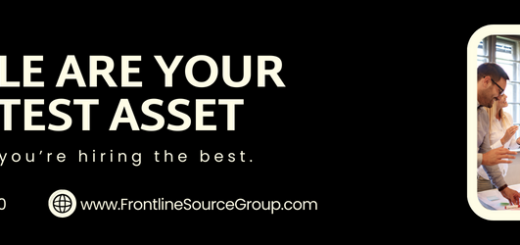New Corporate Alignment: Resolving Hiring Disputes
Handling Hiring Conflicts: A Complete Guide In any company, team cohesion is essential to accomplishing shared objectives and creating a positive work atmosphere. I’ve learned that when team members have a common goal, it fosters creativity & improves collaboration. The probability of miscommunications and disputes is greatly reduced when everyone is in agreement. This alignment is especially important during the hiring process, when disagreements can cause arguments that impede development and foster a hostile environment. The organization’s culture and values are also maintained during the hiring process thanks to team alignment. We are currently hiring for various positions in our company.
Key Takeaways
- Team alignment is crucial for the success of any organization, as it ensures that everyone is working towards the same goals and objectives.
- Hiring disputes often stem from miscommunication, unclear expectations, and lack of alignment within the team.
- Clear hiring criteria and processes help to minimize hiring disputes by ensuring that everyone is on the same page and understands the expectations.
- Open communication and collaboration are essential for resolving hiring disputes and fostering a positive work environment.
- Seeking mediation and conflict resolution can help to address hiring disputes in a fair and constructive manner, leading to better team alignment and morale.
I’ve noticed that new hires are more likely to fit in well with the current culture when hiring decisions are made with the team’s overall ethos in mind. This alignment enhances the team dynamic as a whole in addition to helping the new hires. Organizations can establish a cohesive team that collaborates well to achieve common goals by placing a high priority on team alignment. In order to resolve hiring disputes successfully, I must first determine their underlying causes.
These disagreements frequently result from unclear job roles and responsibilities. Team members may hold conflicting views about candidates if they have different ideas about what a position requires. It is crucial to set clear expectations right away because, in my experience, this ambiguity can lead to tension and frustration among team members.
Team members’ varying priorities are another frequent source of hiring disputes. For example, one individual might place more importance on technical proficiency than another on cultural fit. I have personally witnessed how these conflicting priorities can result in contentious discussions and halted decision-making procedures. By identifying these fundamental problems, I can endeavor to establish a more cordial hiring process where everyone’s opinions are respected and heard. One of the most important steps in reducing disagreements during the hiring process is to establish explicit hiring criteria.
It has come to my attention that clearly defined criteria offer a structure for impartially assessing applicants. In addition to expediting the decision-making process, this clarity reduces the likelihood of conflicts among team members. I can make sure that everyone feels involved in the process and is aware of the reasoning behind every choice by working with others to develop these criteria.
Establishing structured hiring procedures is just as crucial as having clear criteria. In my experience, a standardized method can greatly lessen subjectivity and bias in candidate assessments. Examples of this include the use of uniform evaluation rubrics or interview questions. In order to preserve team morale and cohesiveness, this consistency promotes a sense of justice and openness. By giving clear standards and procedures top priority, I can foster an atmosphere where hiring decisions are confidently and cooperatively made. Effective teamwork, particularly during the hiring process, is based on open communication.
I now see how creating an atmosphere where team members are free to voice their thoughts can result in more fruitful conversations & superior results. Promoting open communication makes it possible for different viewpoints to be expressed, which eventually improves the caliber of hiring choices. In this situation, teamwork is equally essential. I have seen firsthand how teamwork can result in creative solutions and a more comprehensive assessment of applicants. I can make sure that different points of view are taken into account and lessen the possibility of disagreements resulting from misinterpretations or poor communication by incorporating a number of stakeholders in the hiring process.
Providing collaborative opportunities, like group discussions or joint interviews, can improve team ties and result in better hiring decisions. Despite my best efforts to encourage open communication and alignment, disagreements may still occur during the hiring process. In these situations, pursuing mediation can be a useful strategy for reaching a mutually beneficial agreement.
In my experience, involving an impartial third party can aid in facilitating conversations & directing team members toward a solution that meets the needs of all parties. This strategy not only resolves the current disagreement but also emphasizes how crucial teamwork and compromise are. Proactive rather than reactive conflict resolution techniques are preferred. I now know that resolving conflicts early on, before they become more serious, can stop miscommunications from escalating & resulting in more serious conflicts. I can foster a more peaceful hiring environment where differences are seen as opportunities for development rather than barriers by encouraging team members to openly express their concerns and giving them conflict resolution tools. cultivating a feeling of possession.
A sense of accountability and ownership is promoted when all team members participate in the decision-making process. This cooperative strategy motivates people to cooperate in order to achieve a common objective, which eventually results in more deliberate & comprehensive hiring decisions. Put a Collaborative Approach into Practice. I need to make sure that everyone has an equal chance to share their thoughts and perspectives in order to successfully execute this strategy.
This could entail leading brainstorming or structured conversations where everyone’s opinions are valued. establishing a welcoming atmosphere. I can foster an inclusive atmosphere that encourages cooperation and lessens the possibility of disagreements leading to conflict by appreciating the contributions of every team member. In order to reduce hiring disputes within an organization, it is imperative to establish a culture of accountability and transparency.
Employees are more likely to take responsibility for their contributions when they are aware of their roles & responsibilities during the hiring process, I’ve discovered. This feeling of responsibility improves team dynamics in addition to individual performance. Openness is equally crucial in this situation.
I’ve discovered that team members’ trust can be increased by being transparent about the decision-making process, such as by sharing candidate assessments or feedback. Conflicts and misunderstandings are less likely to occur when everyone feels informed & included. I can establish an atmosphere where hiring decisions are collaboratively and respectfully made by cultivating a culture of accountability and transparency.
Finally, ensuring ongoing improvement within an organization requires assessing and modifying hiring practices. I now realize that frequent evaluations of the hiring procedure can help pinpoint areas for improvement & stop disputes from happening again. I can learn a great deal about what went well and what needs improvement by asking team members for their opinions on the hiring process. Also, keeping up with industry best practices can assist me in gradually improving our hiring procedures. Attending workshops or connecting with other experts in my field can offer new insights into efficient hiring procedures, I’ve discovered.
By staying adaptable and dedicated to ongoing development, I can make sure that our hiring procedures change to meet the demands of our company. In summary, handling hiring disputes calls for a multipronged strategy that places an emphasis on open communication, team alignment, and cooperative decision-making. I can establish a more peaceful hiring environment that encourages development and creativity within my company by comprehending the underlying causes of disputes and putting proactive conflict resolution techniques into practice.
I have faith that by regularly reviewing and modifying our procedures, we can create a more cohesive team that can accomplish our common objectives.
In a related article on Frontline Source Group’s CEO Blog, the importance of company culture is highlighted in “It’s All About the Culture – Ours and Yours.” This article delves into the significance of aligning your company’s culture with that of potential hires to ensure a successful and harmonious working environment. By focusing on cultural fit during the hiring process, companies can avoid disputes among their executive team and foster a cohesive and productive workplace. To read more about this topic, visit here.
FAQs
What is team alignment?
Team alignment refers to the process of ensuring that all members of a team are working towards the same goals and objectives, and are in agreement on the best way to achieve them. It involves resolving any conflicts or disputes that may arise among team members.
Why is team alignment important?
Team alignment is important because it ensures that everyone in the team is on the same page and working towards the same goals. It helps to improve communication, collaboration, and overall team performance.
What are hiring disputes among executive teams?
Hiring disputes among executive teams occur when there is disagreement or conflict over the hiring of new employees or executives within the organization. This can include disagreements over the qualifications of candidates, the hiring process, or the overall hiring strategy.
How can hiring disputes among executive teams be resolved?
Hiring disputes among executive teams can be resolved through open and honest communication, a focus on the organization’s goals and objectives, and a willingness to compromise. It may also be helpful to involve a neutral third party, such as a mediator, to help facilitate the resolution process.
What are the potential consequences of unresolved hiring disputes among executive teams?
Unresolved hiring disputes among executive teams can lead to decreased morale, increased turnover, and a lack of trust and cohesion within the team. It can also have a negative impact on the organization’s overall performance and success.





